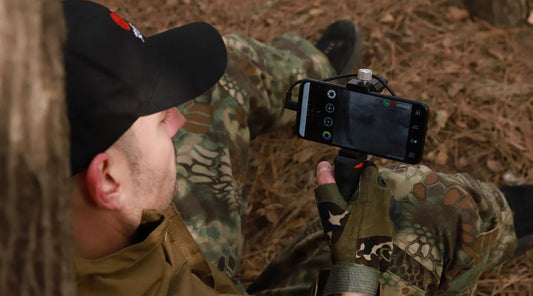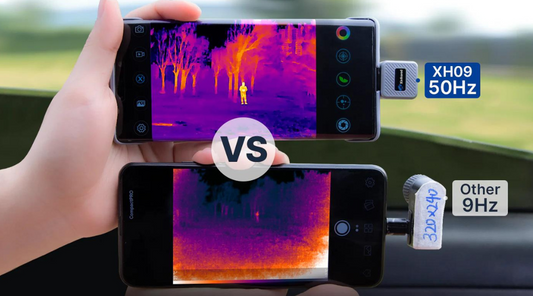Boost Your Understanding of Thermal Imaging: 5 Essential Facts to Know
In the ever-evolving landscape of technology, thermal imaging stands out as a fascinating and indispensable tool. Whether you're a professional in a specific industry or simply curious about this advanced technology, understanding the basics is crucial. In this article, we'll delve into the essential facts about thermal imaging that can boost your knowledge and appreciation for its diverse applications.

Thermal imaging, often associated with night vision and detection, plays a pivotal role across various sectors. From identifying energy inefficiencies to ensuring public safety, this technology offers a unique perspective through the lens of temperature. Let's explore the fundamental aspects that form the backbone of thermal imaging.
What is Thermal Imaging?
At its core, thermal imaging captures infrared radiation emitted by objects, converting it into visible images. Unlike traditional cameras, thermal cameras work by detecting heat rather than light. This allows them to operate in complete darkness, making them invaluable in scenarios where visibility is compromised.
Thermal imaging finds application in numerous industries, including surveillance, healthcare, and even wildlife observation. By understanding its principles, users can leverage this technology to gain insights not possible with the naked eye.

Benefits of Thermal Imaging
Enhanced Visibility in Low-Light Conditions
One of the primary advantages of thermal imaging is its ability to provide clear visibility in low-light environments. Traditional vision might falter in darkness, but thermal cameras excel by detecting temperature variations. This feature is particularly crucial in security and surveillance, where identifying potential threats during the night is paramount.

Detection of Hidden Issues
Thermal imaging goes beyond mere visibility; it unveils hidden problems in various systems. For instance, in construction, it can pinpoint insulation gaps or water leaks. In electrical inspections, it can identify overheating components, preventing potential fire hazards. By uncovering issues that might escape visual inspection, thermal imaging ensures proactive problem-solving.

Safety and Security Applications
In the realm of public safety, thermal imaging plays a vital role. Firefighters use thermal cameras to navigate through smoke-filled environments, locating individuals in distress. Law enforcement agencies employ thermal imaging for tracking suspects in the dark. Understanding these applications highlights the significance of thermal imaging in ensuring the safety and security of communities.
5 Essential Facts about Thermal Imaging
Fact 1: Key Components of a Thermal Image
A thermal image isn't just a random array of colors; it conveys valuable information about temperature variations. Warmer areas appear in brighter colors, while cooler regions take on darker hues. Recognizing this color representation is essential for interpreting thermal images accurately.

Fact 2: Temperature Measurement Accuracy
The accuracy of temperature measurements in thermal imaging is paramount. Different applications, such as medical diagnostics or industrial inspections, demand precise temperature readings. Understanding the factors influencing measurement accuracy ensures that thermal imaging is a reliable tool across diverse fields.

Fact 3: Common Misconceptions about Thermal Imaging
Despite its widespread use, thermal imaging is not immune to misconceptions. Addressing myths, such as the notion that thermal cameras only work in complete darkness, enhances our understanding. This fact-checking ensures that users make informed decisions when employing thermal imaging technology.

Fact 4: Advancements in Thermal Imaging Technology
As technology advances, so does thermal imaging. New developments, such as higher resolution and improved sensitivity, contribute to enhanced performance. Staying informed about these advancements enables users to make informed choices when selecting thermal imaging equipment.
Fact 5: Practical Tips for Using Thermal Cameras
To maximize the benefits of thermal imaging, users should adhere to best practices. Proper calibration, regular maintenance, and an understanding of the limitations of thermal cameras are essential. These practical tips ensure optimal performance and longevity of thermal imaging equipment.

Industries Using Thermal Imaging
Thermal imaging isn't confined to a specific sector; its applications span across various industries:
- Healthcare: Infrared thermography aids in medical diagnostics.
- Construction: Identifying insulation gaps and water leaks.
- Manufacturing: Ensuring equipment operates within safe temperature ranges.
- Security and Defense: Security surveillance, target identification, and navigation.
- Firefighting and Emergency Services: Locating individuals in smoke-filled environments.
How to Choose the Right Thermal Imaging Camera
Selecting the right thermal imaging camera involves considering factors like application, budget, and maintenance. Knowing what to look for ensures that the chosen camera meets specific needs while staying within budget constraints.
Thermal imaging is a versatile technology with far-reaching applications. By understanding its fundamental principles and staying informed about advancements, users can harness its power across various industries. From enhancing visibility to detecting hidden issues, thermal imaging continues to be a game-changer in technology.
Frequently Asked Questions (FAQs)
Q1: Can thermal cameras see through walls?
A: No, thermal cameras detect heat, not solid objects.
Q2: Are thermal images in real-time?
A: Yes, modern thermal cameras provide real-time imaging.





